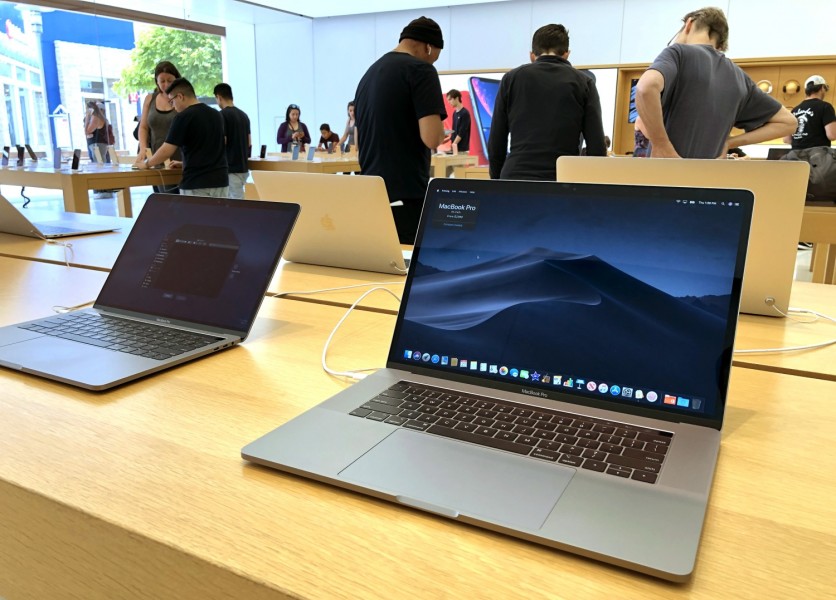
A possibly leaked image from Lenovo shows a pretty radical-looking laptop concept, with a transparent screen and a glass multi-touch keyboard. And while it's also utterly impractical, it does make you wonder why laptops have essentially stayed the same since Apple invented them.
In 1991, Apple launched the PowerBook. Its clamshell design, with a keyboard and pointer-control device in one half and screen in the other, is still the same design used in almost all modern laptops, including Apple's own MacBooks. The concept is so firmly embedded that even the iPad, which looked for a while like it might be an alternative future for portable computing, ended up with a keyboard and trackpad just like all the others. Laptops are amazing, but they could do with a change.
"The clamshell design of laptops is like that trusty old friend who always has your back. It's been around forever, and there's a good reason for that. People love the familiarity and simplicity of it. When you think about it, it's like opening a book or a magazine - you open it up, and there's your workspace, ready to go. Plus, it offers a certain level of protection for the screen when you close it up, which is nice when you're on the move," said tech entrepreneur and laptop lover Jon Morgan in an interview with Tech Times. "Now, as for those convertible laptops like Lenovo's Yoga, they're cool, but they haven't quite taken over the market like some might have thought."
Lapping it Up
There's a lot to love about laptops. They have everything you need in a computer, all in one package. The screen, keyboard, trackpad, speakers, camera for video calls, and a host of valuable ports for hooking up to accessories and peripherals are protected by a tough plastic or aluminum shell when closed. It's easy to see why this design has persisted.
But there's a lot about laptop design that could be better. Their biggest downside is ergonomics. Use them on a desk as intended, and you'll crick your neck staring down at that screen. If you actually use them on your lap, then you also risk damaging your wrists, arms, shoulders, and back from bad posture.
The answer is to hook the laptop to an external display or put it on a stand and use another keyboard and mouse/trackpad. And that's all great. The beauty of a laptop is its portability and flexibility, especially these days when a MacBook is just as powerful as a desktop iMac or MacStudio, sharing the same chips inside.
But why don't we embrace that modularity a little more? Let's imagine what a laptop could be if it weren't constrained by a design from the last century.
The Future of Laptops
We've already mentioned two options-the iPad and Lenovo's Yoga convertible laptops.
The iPad is an amazing example of modularity. It can be a laptop when you need it, but when you don't, you can ditch the keyboard cover and go solo as a lightweight tablet. It's as powerful (in hardware, at least) as a Mac, and it can also be used in a stand with a keyboard and mouse (like an iMac), become a TV for movies, and be utilized as a graphics tablet with the Apple Pencil. In many ways, it is utterly superior to the Mac, except for one: software. iPadOS is still just a bigger version of the iPhone and is just as limited.
Then there's Lenovo's Yoga 2-in-1, a fantastic concept also limited by software. The Yoga range includes a convertible touchscreen laptop where the screen can flip around to use the whole device as a tablet. There's a model with two screens, one above the other.
But they run Windows, which is not suited to a touch-tablet setup.
Imagine, then, that Apple created a convertible MacBook. It could have a removable or flip-around keyboard and be used with the Apple Pencil. And here's where things start to get interesting. The Mac and iPad already run on the same chips, so the battery life in the Mac is as excellent as that of the iPad. And this also means that the Mac already runs iPad apps-it's a terrible experience because they're designed for touch.
"A touch-screen Mac with convertible design and iPad app compatibility could be intriguing. However, success would depend on seamless integration, user demand, and ensuring the device's versatility doesn't compromise core Mac functionalities," said technology blogger Dinesh Kumar in an interview.
So, a touch-screen MacBook can become an iPad just by flipping the screen. You get all the power and flexibility of a Mac; you can install any app you like, but it also works as the best tablet available. All the parts are there already-Apple just has to put them together into one machine, and unfortunately, it doesn't-so far-seem interested.
Charlie Sorrel has been writing about technology, and its effects on society and the planet, for almost two decades. Previously, you could find him at Wired's Gadget Lab, Fast Company's CoExist, Cult of Mac, and Mac Stories. He also writes for his own site, StraightNoFilter.com, Lifewire Tech News, and iFixit.





